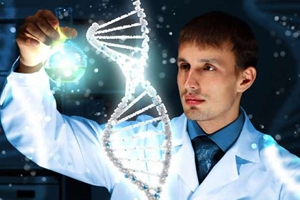Ru
|
Eng
Over RUB182m to be earmarked for Belarus-Russia program to study human DNA in 2016
11.02.2016

In 2016 Belarus and Russia will invest nearly RUB182.4 million in the Union State program "DNA Identification", Chief Scientific Secretary of the National Academy of Sciences of Belarus Professor Alexander Kilchevsky told reporters, BelTA has learned.
The biggest financing will be earmarked in the next two years. The program is designed to run for five years. All in all, its financing will amount to more than RUB2 billion.
The program, the full title of which reads “Development of innovative geno-geographic and genomic technologies and identification of individual characteristics based on the studies of the human gene pools of the regions of the Union State", includes two main blocks: research in medical genetics and research aimed at the development of forensics.
The goal of the program is to develop innovative technologies for the development of forensics and for the prevention of socially significant diseases, to improve the security of Belarus and Russia and to counter terrorism. "The program is expected to help prevent terrorist attacks and crimes against n individual, identify victims of natural and man-made disasters and terrorist acts," said Alexander Kilchevsky.
The implementation of the Union State program will help improve the quality and span of life thanks to disease forecasting. According to the participants of the program, the number of unsolved crimes will be reduced. Investigative events will need less time to be implemented. As a result, their costs will go down as well. It is also planned to fully replace the imported reagents kits used in person identification.
The idea of the program emerged more than two years ago. The government customers on the behalf of Belarus and Russia are the National Academy of Sciences and the Federal Agency for Scientific Organizations correspondingly. The NASB Institute of Genetics and Cytology is the umbrella organization on Belarus’ behalf.
On 11 February the NASB Institute of Genetics and Cytology hosted a meeting with a group of Belarusian and Union State journalists to introduce them to the program. The journalists visited the structural subdivisions of the institute, i.e. human genetics labs, the Center for Multiple Access Genom, the National Databank of Human, Animal, Plant and Microorganism DNA.
The biggest financing will be earmarked in the next two years. The program is designed to run for five years. All in all, its financing will amount to more than RUB2 billion.
The program, the full title of which reads “Development of innovative geno-geographic and genomic technologies and identification of individual characteristics based on the studies of the human gene pools of the regions of the Union State", includes two main blocks: research in medical genetics and research aimed at the development of forensics.
The goal of the program is to develop innovative technologies for the development of forensics and for the prevention of socially significant diseases, to improve the security of Belarus and Russia and to counter terrorism. "The program is expected to help prevent terrorist attacks and crimes against n individual, identify victims of natural and man-made disasters and terrorist acts," said Alexander Kilchevsky.
The implementation of the Union State program will help improve the quality and span of life thanks to disease forecasting. According to the participants of the program, the number of unsolved crimes will be reduced. Investigative events will need less time to be implemented. As a result, their costs will go down as well. It is also planned to fully replace the imported reagents kits used in person identification.
The idea of the program emerged more than two years ago. The government customers on the behalf of Belarus and Russia are the National Academy of Sciences and the Federal Agency for Scientific Organizations correspondingly. The NASB Institute of Genetics and Cytology is the umbrella organization on Belarus’ behalf.
On 11 February the NASB Institute of Genetics and Cytology hosted a meeting with a group of Belarusian and Union State journalists to introduce them to the program. The journalists visited the structural subdivisions of the institute, i.e. human genetics labs, the Center for Multiple Access Genom, the National Databank of Human, Animal, Plant and Microorganism DNA.
SCIENCE. TECHNOLOGY. INNOVATIONS
13.08.2024
28.06.2024
28.06.2024
25.06.2024
05.06.2024
15.05.2024
15.05.2024
26.04.2024
26.04.2024
26.04.2024













